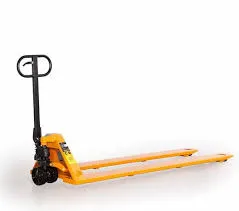


Safety Equipment for Working at Heights
Working at heights is a critical aspect of various industries, including construction, maintenance, and warehousing. This type of work poses significant risks, including falls, which can lead to severe injuries or fatalities. Therefore, implementing stringent safety measures and equipping personnel with the right safety equipment is paramount. This article discusses the essential safety equipment for working at heights, emphasizing its importance and best practices for use.
Understanding the Risks
Before delving into the specific safety equipment, it's vital to understand the risks associated with working at heights. Falls from heights are one of the leading causes of workplace injuries. According to the Occupational Safety and Health Administration (OSHA), falls account for a substantial number of deaths in the construction industry. The risks can arise from various situations, including unstable platforms, lack of guardrails, or improper use of ladders and scaffolds. Therefore, proper training and equipment can significantly reduce these risks.
Essential Safety Equipment
1. Personal Fall Arrest Systems (PFAS) Personal Fall Arrest Systems are crucial for ensuring workers' safety when working at heights. A PFAS typically includes a harness, lanyard, and anchorage point. The harness must be worn correctly to distribute the impact forces across the body in the event of a fall. It's important to select the right type of harness based on the job requirements and to ensure that it fits properly. Regular inspection of the equipment for wear and tear is essential for maintaining safety standards.
2. Ladders Ladders are fundamental tools for working at heights. However, using the correct ladder for the job is vital. There are different types of ladders, including extension ladders, step ladders, and platform ladders. Each has its specific use cases. When using a ladder, workers should maintain three points of contact (two hands and one foot or two feet and one hand) at all times. Additionally, ensuring the ladder is placed on a stable surface and securing it against movement is critical.
3. Scaffolding Scaffolding provides a temporary work platform at various heights. It must be erected following specific safety standards to prevent collapse or accidents. Workers must always use guardrails, toe boards, and ensure the scaffolding is adequately braced and secured. Regular inspections by a qualified person can help identify potential hazards and ensure safe working conditions.
4. Guardrails Installing guardrails around working platforms or edges is one of the most effective preventive measures against falls. These barriers create a physical boundary that is hard to breach, thus significantly lowering the risk of falling. Guardrails should be constructed to comply with safety regulations, ensuring they are stable and placed at appropriate heights.

5. Safety Helmets Helmets are essential for protecting workers from head injuries, particularly from falling objects. They should meet appropriate safety standards and fit securely on the head. Regular inspection for cracks or damage is also necessary, as compromised helmets provide inadequate protection.
6. Safety Footwear Proper footwear is critical for ensuring traction and reducing the risk of slips and falls. Safety shoes designed for work environments often come with slip-resistant soles and steel toes to protect against foot injuries. Choosing appropriate footwear based on the work environment and conditions can greatly enhance safety.
Best Practices for Using Safety Equipment
1. Training Providing comprehensive training on the proper use of safety equipment is crucial. Workers should be educated on how to wear and inspect their fall arrest systems, how to correctly set up ladders and scaffolding, and the use of personal protective equipment (PPE).
2. Regular Inspections Conducting regular inspections of all safety equipment is essential. Equipment that shows signs of wear or damage should be repaired or replaced immediately. This applies to harnesses, ladders, scaffolding, and other safety gear.
3. Developing a Safety Plan Organizations should implement a safety plan tailored to specific jobs that involve working at heights. This plan should outline safety protocols, equipment usage, and emergency procedures in case of an accident.
4. Encouraging a Safety Culture A culture that prioritizes safety can be fostered through open communication, encouraging workers to report unsafe conditions or practices without fear of reprisal. Recognizing safe practices also reinforces the importance of adhering to safety measures.
Conclusion
Safety equipment is essential for protecting workers who operate at heights. By understanding the risks and employing the right safety measures, businesses can significantly mitigate potential hazards. Investing in quality safety equipment, providing thorough training, and fostering a safety-conscious culture are key components to ensuring a safe working environment at heights. Ultimately, prioritizing safety not only protects employees but also enhances productivity and morale.



